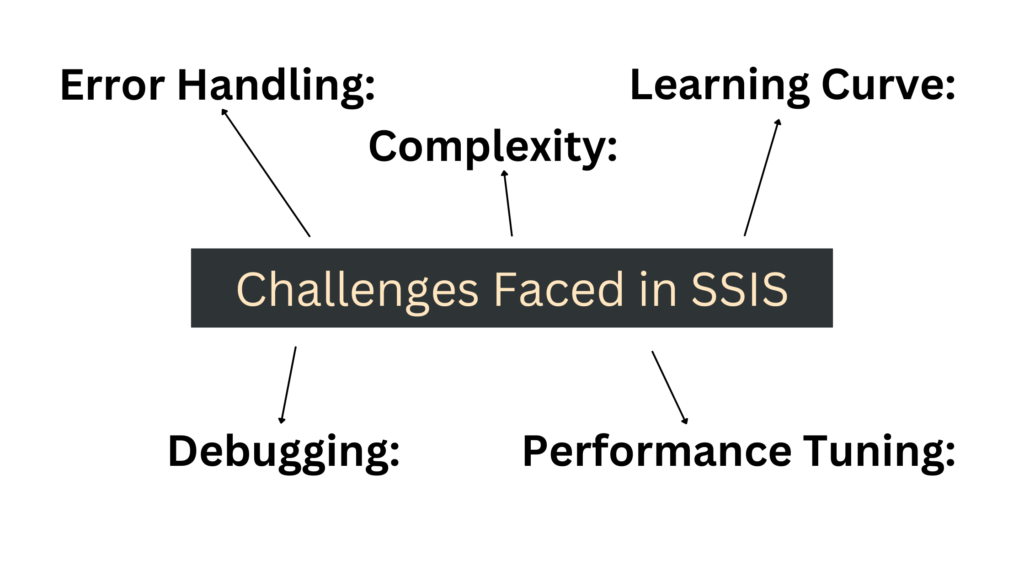SQL Server Integration Services (SSIS816), an integral component of Microsoft’s SQL Server ecosystem, stands as a stalwart platform for data integration, transformation, and automation within SQL Server environments. Renowned for its versatility and power, SSIS816 empowers users to orchestrate complex data workflows with ease. However, amid its myriad benefits, SSIS816 presents users with a unique array of challenges that require careful navigation and strategic resolution.
Understanding the Landscape of SSIS816:
SSIS816, with its intuitive interface and robust architecture, facilitates seamless data integration and transformation tasks. Its rich set of features, including data flow tasks, control flow logic, and extensive connectivity options, make it a preferred choice for organizations seeking to streamline their data management processes. However, beneath its surface lies a landscape fraught with challenges that can impede the efficiency and effectiveness of data integration initiatives.
Common Challenges Encountered in SSIS816:
Complexity:
The inherent complexity of SSIS816 packages can pose significant challenges for users, particularly when designing and maintaining intricate workflows. Key issues include:
- Intricate Workflows: Designing workflows that encompass multiple data sources, transformations, and destinations can quickly become convoluted, leading to difficulties in understanding and troubleshooting package logic.
- Extensive Configurations: Configuring SSIS816 packages involves navigating a plethora of settings, properties, and configurations, which can overwhelm users, especially those new to the platform.
- Managing Dependencies: Managing dependencies between tasks and components within SSIS816 packages requires careful planning and coordination to ensure smooth execution and data consistency.
Performance Tuning:
Optimizing the performance of SSIS816 packages is paramount, particularly when dealing with large volumes of data. Challenges in this area include:
- Identifying Bottlenecks: Pinpointing performance bottlenecks within SSIS816 packages requires a deep understanding of package execution, data flow, and system resources.
- Configuring Optimal Settings: Tuning SSIS816 settings such as buffer sizes, parallelism, and memory usage can be complex, requiring thorough testing and experimentation to achieve optimal performance.
- Ensuring Efficient Data Flow: Designing efficient data flows that minimize latency and maximize throughput is essential for achieving optimal performance in SSIS816 packages.
Error Handling:
Implementing robust error handling mechanisms is critical to ensure the reliability and integrity of data processing tasks. Common challenges in this area include:
- Catching and Logging Errors: Capturing and logging errors that occur during package execution is essential for troubleshooting and auditing purposes. However, configuring error handling tasks and logging mechanisms can be complex.
- Retrying Failed Operations: Implementing retry logic to handle transient errors and recover from failed operations requires careful consideration of factors such as error conditions, retry intervals, and maximum retry attempts.
- Maintaining Data Integrity: Ensuring data integrity and consistency in the event of errors or failures is paramount. Implementing mechanisms such as transactions, checkpoints, and rollback procedures can help maintain data integrity throughout the data processing pipeline.
Debugging:
Debugging SSIS816 packages, especially those containing complex logic or extensive data flows, can be challenging. Key challenges include:
- Identifying the Root Cause of Issues: Troubleshooting and debugging SSIS816 packages require the ability to identify and isolate the root cause of issues, which may involve tracing data flow, inspecting variable values, and analyzing execution logs.
- Tracing Data Flow: Tracing the flow of data through SSIS816 packages is essential for understanding how data is manipulated and transformed at each stage of processing. However, tracing data flow paths can be complex, especially in packages with multiple transformations and branching logic.
- Resolving Configuration Errors: Addressing configuration errors, such as invalid connections, missing dependencies, or incorrect settings, requires meticulous attention to detail and thorough testing to ensure proper package execution.
Learning Curve:
For novice users, the learning curve associated with SSIS816 can be steep, requiring dedication, practice, and ongoing education to master. Key areas of focus include:
- Understanding Control Flow and Data Flow: Mastering the concepts of control flow and data flow is essential for designing and orchestrating SSIS816 packages effectively. Control flow governs the execution sequence of tasks and workflows, while data flow defines the movement and transformation of data within the package.
- Learning Transformation Tasks: Familiarizing oneself with the various transformation tasks available in SSIS816, such as data conversion, aggregation, and lookup operations, is essential for performing complex data manipulation and processing tasks.
- Configuring Connections and Variables: Configuring connections to data sources and destinations, as well as defining variables to store and manipulate data within SSIS816 packages, requires a solid understanding of package configurations and best practices.
Conclusion:
In conclusion, while SSIS816 presents users with a unique set of challenges, its unparalleled capabilities and versatility outweigh the obstacles encountered during its implementation and utilization. As organizations strive to optimize their data management processes in an increasingly complex and competitive landscape, SSIS816 remains a cornerstone solution for achieving seamless data integration, transformation, and automation.
By acknowledging and proactively addressing the common challenges associated with SSIS816, users can navigate through complexities and maximize the benefits offered by this powerful tool. Through strategic planning, diligent optimization efforts, and ongoing learning and development initiatives, organizations can harness the full potential of SSIS816 to drive innovation, streamline operations, and achieve tangible business outcomes.
People Also search for:
- SSIS 816 Vs Other ETL Tools
- Why Do We Use SSIS in SQL Server?
- Where Are SSIS Packages Stored?
- What are The 3 Different Types of Control Flow Elements in SSIS (ssis 816)
- How Many Ways Are There to Deploy a Package in SSIS?
- How Many Types of Containers Are in SSIS 816?
- SSIS 816: A Comprehensive Guide to the Latest Features and Enhancements
FAQs:
Q: How can I improve the performance of my SSIS816 packages?
A: To enhance performance, focus on identifying bottlenecks, optimizing data flow settings, and ensuring efficient transformations. Parallelizing tasks, optimizing buffer sizes, and tuning SQL queries can also improve performance.
Q: What are some best practices for error handling in SSIS816?
A: Implement comprehensive error logging, configure retry mechanisms, and ensure data integrity through checkpoints and rollback procedures. Utilize event handlers to automate error resolution processes.
Q: How can I streamline the debugging process for SSIS816 packages?
A: Utilize built-in debugging tools such as breakpoints, data viewers, and logging to trace package execution. Implement logging features to capture detailed information about package execution and utilize third-party debugging tools for advanced debugging capabilities.
Q: What resources are available for learning SSIS816?
A: Explore online tutorials, documentation, video tutorials, and community forums for learning SSIS816. Microsoft offers official documentation and training courses, and there are many books and online courses available from third-party providers.
Q: How can I stay updated on the latest developments in SSIS816?
A: Regularly check for updates and announcements on the official Microsoft website and community forums. Join online SSIS816 user groups and forums, attend conferences, webinars, and training sessions to stay informed about emerging technologies and best practices.
Q: What are some common pitfalls to avoid when working with SSIS816?
A: Avoid neglecting to properly configure connections and variables, overlooking error handling mechanisms, and overcomplicating SSIS816 packages. Thorough testing, validation, and adherence to best practices can help avoid common pitfalls.




